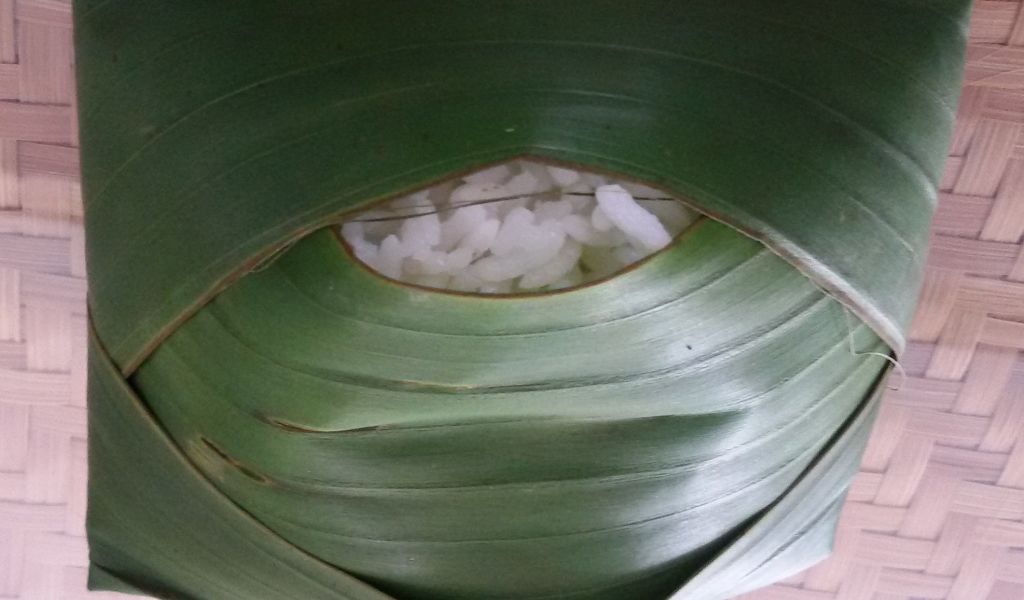Traditional banana leaf - the real mak khuauy of Lao cuisine

The humble banana leaf is the genuine article when it comes to traditional Lao food wrap. It was deeply rooted in the local lifestyle, long before the invasion of plastic packaging and bags. Nowadays, many businesses are serving up ready to go food for people's conveniences, but this is helping to kill off local traditions.
During national celebrations, like Hor Khaosalak last week on September 13 and Orkphansa on October 13, many folk prepare traditional foods as offerings such as the essential khao tom and khao nom. These traditional dishes should be made by steaming or boiling sticky rice with coconut milk and sugar and then wrapping in banana leaf. Khao tom and khao nom are authentic traditional Lao rice cakes, which have been an integral part of Lao Buddhist culture since ancient times and a prerequisite for giving alms. In the past, almost all Buddhists made everything with just enough food for their own consumption and giving alms. There were no Lao rice cakes at the markets. But unlike the days of yore when everyone made their own, nowadays most people simply don’t have the time and prefer to buy them instead. Also, many are also preferring to buy imported packaged food or cakes, which can be kept much longer. Furthermore, people use to go and cut some banana leaves early in the morning and then steam or lay them in the sun to soften them before wrapping khao tom and khao nom. It was fun in the evening as groups of young people would go from house to house in their village to help each other make Lao rice cakes. So it was a great time for young men and women to talk to each other. After making the cakes, everyone would go back home to steam or boil their culinary creations and return to see friends again and eat the cakes together. Now, those activities remain in the past because young people are no longer interested in making cakes together. They prefer to buy them in the markets, while older folk living in the city also seem to be too busy as well, so many teenagers and adults in the capital no longer know how to make Lao cakes. Nevertheless, compared to the city, most folk in rural areas pay more attention to preparing everything themselves for important Buddhist lent events.
Last week when Hor Khaosalark was celebrated, hundreds of people were giving alms to the monks but only a few had traditionally wrapped Lao cakes in their bowls. Many had imported processed candies and drinks as well as fruit, but nothing they made themselves. This doesn’t mean what they did was good or bad, but it is important to know how to make local desserts and sweets. Having a passion for these delicacies will allow the Lao population to pass on the knowledge to next generations and help keep a fine Lao tradition alive.
Information source: Vientiane Times.
